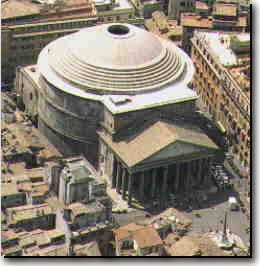Monday, September 7
Wednesday, August 26
Temple Comparison


I think we can agree that the Egyptians were very spiritual people, and built the temples as a sign of respect and love for their gods.
Rome: The Roman temples, although still highly spiritual, were mainly built to impress. They were built with marble, rare gems, expensive timber and the finest materials money could buy. Buildings with roofs that soar up fifty meters high. Expensive marbles on every inch of every surface. The Romans were very proud of their buildings, and liked to show them off.
When paeganism was overruled as the national religion and Christianity was introduced the temples were either converted to churches, or stripped of their marble and statues to be used in the Churches.
One of the converted temples is the Pantheon, a Christian church in the heart of Rome. It is here:
 A temple stripped of it's treasures is shown here:
A temple stripped of it's treasures is shown here:

Thank you for listening. Next time we will cover the heirarchy and how to identiy the levels of homes.
Sunday, August 23
Rome: Aqueducts


Wednesday, August 19
Houses


Welcome
Some of the buildings we will be examining are the temples, the landmarks (Colosseum, Pyramid etc.) and even the minor homes.
There is also another site here [link]
Comparison
Egyptian statue

This statue can be found in the Roman Vatican. It is an Egyptian god in Roman robes.


